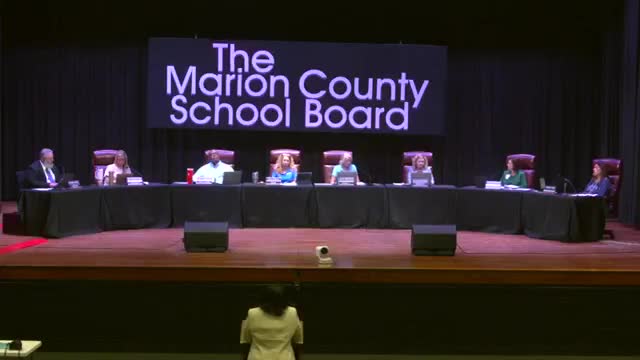School district faces funding challenges amid growing special needs enrollment
May 25, 2025 | Marion, School Districts, Florida
This article was created by AI summarizing key points discussed. AI makes mistakes, so for full details and context, please refer to the video of the full meeting. Please report any errors so we can fix them. Report an error »

In a recent work session held by the Marion County School Board, critical discussions unfolded regarding the district's enrollment projections and the financial implications tied to special needs education. As board members gathered, the atmosphere was charged with a sense of urgency and responsibility, reflecting the challenges faced by the district in providing adequate services to its students.
One of the key points raised was the financial strain associated with supporting students with special needs. A board member highlighted that the funding generated from identifying these students often falls short of covering the necessary services, particularly for those requiring specialized equipment and trained personnel. For instance, the cost of assistive technology for non-verbal students can exceed $20,000, a figure that has likely increased in recent years. This reality underscores the ongoing struggle to balance the budget while meeting the diverse needs of the student population.
Enrollment figures were also a focal point of the discussion. The board noted that despite the introduction of family empowerment scholarships, which have increased funding projections significantly, the district still faces a slight decrease in full-time equivalent (FTE) enrollment. This fluctuation complicates financial planning, as the funding model relies heavily on accurate enrollment data. The board expressed concern over the unpredictability of these numbers, especially with recent legislative changes that have broadened eligibility for scholarships, making it harder to forecast future enrollment accurately.
In response to these challenges, the district's leadership emphasized their commitment to transparency and proactive budgeting. They are currently reviewing departmental budgets in detail to identify potential cuts and areas for improvement. The board acknowledged the importance of maintaining a healthy fund balance, which has been crucial in navigating financial difficulties in the past.
As the meeting progressed, discussions turned to staffing ratios and the potential need to revisit the current school-level staffing plan. The board recognized that increasing the number of special needs paraprofessionals and addressing the implications of a seven-period school day could help better serve students, though these changes would require careful consideration of funding sources.
The session concluded with a shared understanding of the complexities involved in managing the district's finances while striving to provide quality education. Board members expressed gratitude for the efforts of the district staff, acknowledging the hard work and dedication required to meet the needs of all students. As Marion County continues to navigate these challenges, the focus remains on ensuring that every child receives the support they need to thrive in their educational journey.
One of the key points raised was the financial strain associated with supporting students with special needs. A board member highlighted that the funding generated from identifying these students often falls short of covering the necessary services, particularly for those requiring specialized equipment and trained personnel. For instance, the cost of assistive technology for non-verbal students can exceed $20,000, a figure that has likely increased in recent years. This reality underscores the ongoing struggle to balance the budget while meeting the diverse needs of the student population.
Enrollment figures were also a focal point of the discussion. The board noted that despite the introduction of family empowerment scholarships, which have increased funding projections significantly, the district still faces a slight decrease in full-time equivalent (FTE) enrollment. This fluctuation complicates financial planning, as the funding model relies heavily on accurate enrollment data. The board expressed concern over the unpredictability of these numbers, especially with recent legislative changes that have broadened eligibility for scholarships, making it harder to forecast future enrollment accurately.
In response to these challenges, the district's leadership emphasized their commitment to transparency and proactive budgeting. They are currently reviewing departmental budgets in detail to identify potential cuts and areas for improvement. The board acknowledged the importance of maintaining a healthy fund balance, which has been crucial in navigating financial difficulties in the past.
As the meeting progressed, discussions turned to staffing ratios and the potential need to revisit the current school-level staffing plan. The board recognized that increasing the number of special needs paraprofessionals and addressing the implications of a seven-period school day could help better serve students, though these changes would require careful consideration of funding sources.
The session concluded with a shared understanding of the complexities involved in managing the district's finances while striving to provide quality education. Board members expressed gratitude for the efforts of the district staff, acknowledging the hard work and dedication required to meet the needs of all students. As Marion County continues to navigate these challenges, the focus remains on ensuring that every child receives the support they need to thrive in their educational journey.
View full meeting
This article is based on a recent meeting—watch the full video and explore the complete transcript for deeper insights into the discussion.
View full meeting